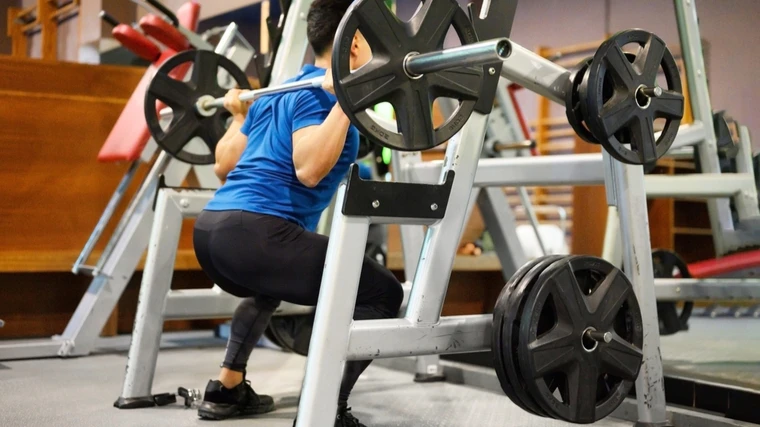Back squats are one of the most effective lower-body exercises, helping to build strength, power, and muscle mass. However, to get the most out of this exercise, proper form is essential. Performing back squats correctly not only prevents injuries but also ensures maximum muscle activation. Whether you’re a beginner or an experienced lifter, refining your technique can lead to better performance and long-term gains.
Why Back Squats Are Essential for Strength Training
Back squats engage multiple muscle groups, including your quads, hamstrings, glutes, and core. They also improve overall stability and functional strength, making them a staple in strength training routines. Unlike machines, back squats require full-body coordination, helping you develop better balance and control.
How to Perform Back Squats with Perfect Form
Back Squat Technique Demonstration
Trainer shows how to perform a classic back squat. Watch it in action, then read on to learn all the details you need to get the most out of this important move.
1. Setting Up for Success
- Start by positioning the barbell on a squat rack at chest height.
- Step under the bar and rest it across your upper back, gripping it slightly wider than shoulder-width.
- Keep your elbows pointed slightly downward to maintain a stable position.

2. Finding Your Optimal Squat Stance
- Step back from the rack with your feet about shoulder-width apart.
- Your toes should point slightly outward to allow for better knee tracking.
- Engage your core and keep your chest up before initiating the movement.

3. Executing the Perfect Squat
- Lower yourself by pushing your hips back and bending your knees simultaneously.
- Keep your weight evenly distributed across your feet, avoiding excessive forward lean.
- Aim to squat until your thighs are at least parallel to the floor, maintaining control throughout the movement.

4. Driving Up with Power
- Push through your heels to return to the starting position.
- Keep your chest up and avoid locking out your knees too aggressively at the top.
- Focus on controlled breathing—inhale on the way down, exhale as you push up.

How to Plan Your Back Squat Training
To maximize your progress, structure your back squat routine based on your goals:
- Frequency: Beginners should squat 2-3 times per week, intermediates 3-4 times, and advanced lifters 4+ times.
- Reps & Sets: Strength-focused lifters should aim for 4-6 sets of 3-6 reps, while hypertrophy goals require 3-5 sets of 8-12 reps.
- Progressive Overload: Gradually increase weight or reps each week to continue making gains.
- Balanced Training: Combine squats with deadlifts, lunges, and hamstring exercises for full lower-body development.
- Recovery & Mobility: Allow rest days, warm up properly, and incorporate stretching and foam rolling to prevent injuries.
This keeps your squat training effective and structured for optimal results!
Common Mistakes to Avoid
🚫 Leaning Too Far Forward – This shifts the weight away from your legs and puts unnecessary strain on your lower back. Maintain an upright posture throughout the movement.
🚫 Knees Caving In – Keep your knees aligned with your toes to avoid stress on your joints. If needed, adjust your stance for better stability.
🚫 Not Squatting Deep Enough – Partial squats limit muscle activation. Aim for full depth while maintaining good form.
🚫 Lifting Heels Off the Ground – Keep your heels firmly planted to ensure proper weight distribution and avoid imbalance.
Tips to Improve Your Back Squats
✔ Work on Mobility – Tight ankles and hips can limit squat depth. Incorporate stretching and mobility drills to improve flexibility.
✔ Strengthen Your Core – A strong core helps maintain posture and stability during back squats. Add core-focused exercises to your routine.
✔ Start with Light Weights – Mastering technique should come before adding heavy loads. Gradually increase weight as your form improves.
✔ Use a Spotter or Safety Bars – If lifting heavy, having a spotter or using safety bars can provide extra security and confidence.
Final Thoughts
Back squats are a fundamental exercise for building lower-body strength, but proper execution is key to seeing results and preventing injuries. By focusing on good technique, avoiding common mistakes, and incorporating mobility work, you can maximize your performance and make steady progress in your training. Whether you’re aiming for strength, muscle growth, or athletic performance, improving your back squat form will help you reach your goals more effectively.

